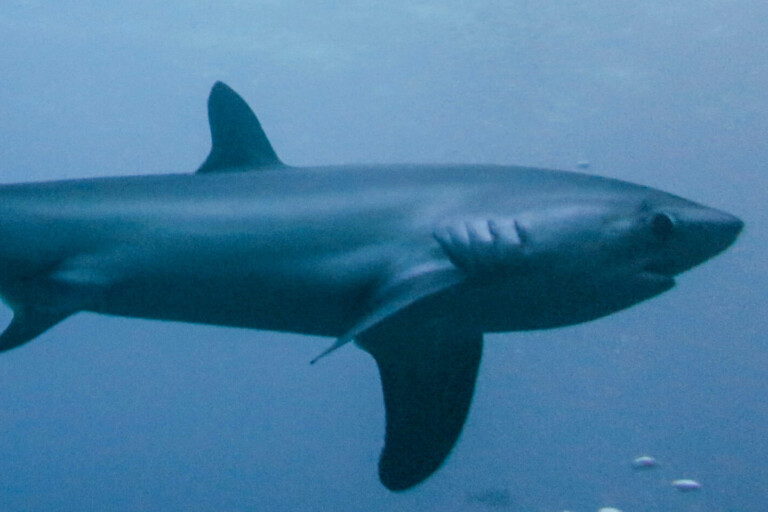- Camera traps set up around a Canadian artic research camp led to the first published documentation of all three North American bear species in the same locations.
- Although more than 90 percent of the 401 bear visits recorded by the cameras were of polar bears, the presence of grizzlies, which have been seen as threatening polar bears, has caused debate among scientists, conservation managers and local communities.
- The camera data did not document interactions among polar, grizzly and black bears, though the researchers say the spatial overlap of the species suggests potential for interspecies interactions to occur, raising questions about how they might affect bear conservation efforts in the future.
- Some conservation managers, aware that their values align with those of the region’s Indigenous communities, are increasingly marrying traditional wisdom to scientific methods to inform their work.
In 1998, Douglas Clark witnessed Manitoba’s second recorded grizzly bear (Ursus arctos horribilis) sighting of the century. Then a warden in Canada’s Wapusk National Park, he remembers swooping down near the shores of Hudson Bay in a Bell 212 helicopter to confirm the distinctive, muscular hump of a lone grizzly running along a gravel beach ridge.
Grizzlies had been considered extirpated in this sliver of the province since the late 1800s, and Wapusk — literally meaning “white bear” in Cree — was a land ruled by the polar bear (Ursus maritimus), an apex predator that was protected at all costs.

“Get down there with a trap and a rifle and get rid of that thing!” he recalls a senior park manager telling him.
Grizzly sightings on this polar bear turf by researchers and locals increased over the next two decades. The lethal control approach has been touted by some conservation communities, with fears that grizzly bear range expansion would threaten polar bear populations. Now, with recently captured camera trap footage showing grizzlies, polar bears and black bears (Ursus americanus) roaming the park in close proximity, Clark said he suspected his latest research may shift the conservation status quo in Canada’s ever-changing north.
“Many conservationists don’t look positively on the idea of environmental changes, especially when it affects high-profile species, like the polar bear,” Clark told Mongabay. “Grizzlies are the new kids on the block … so, it poses the question, is this change good or bad? And are we valuing polar bears more than grizzlies?”
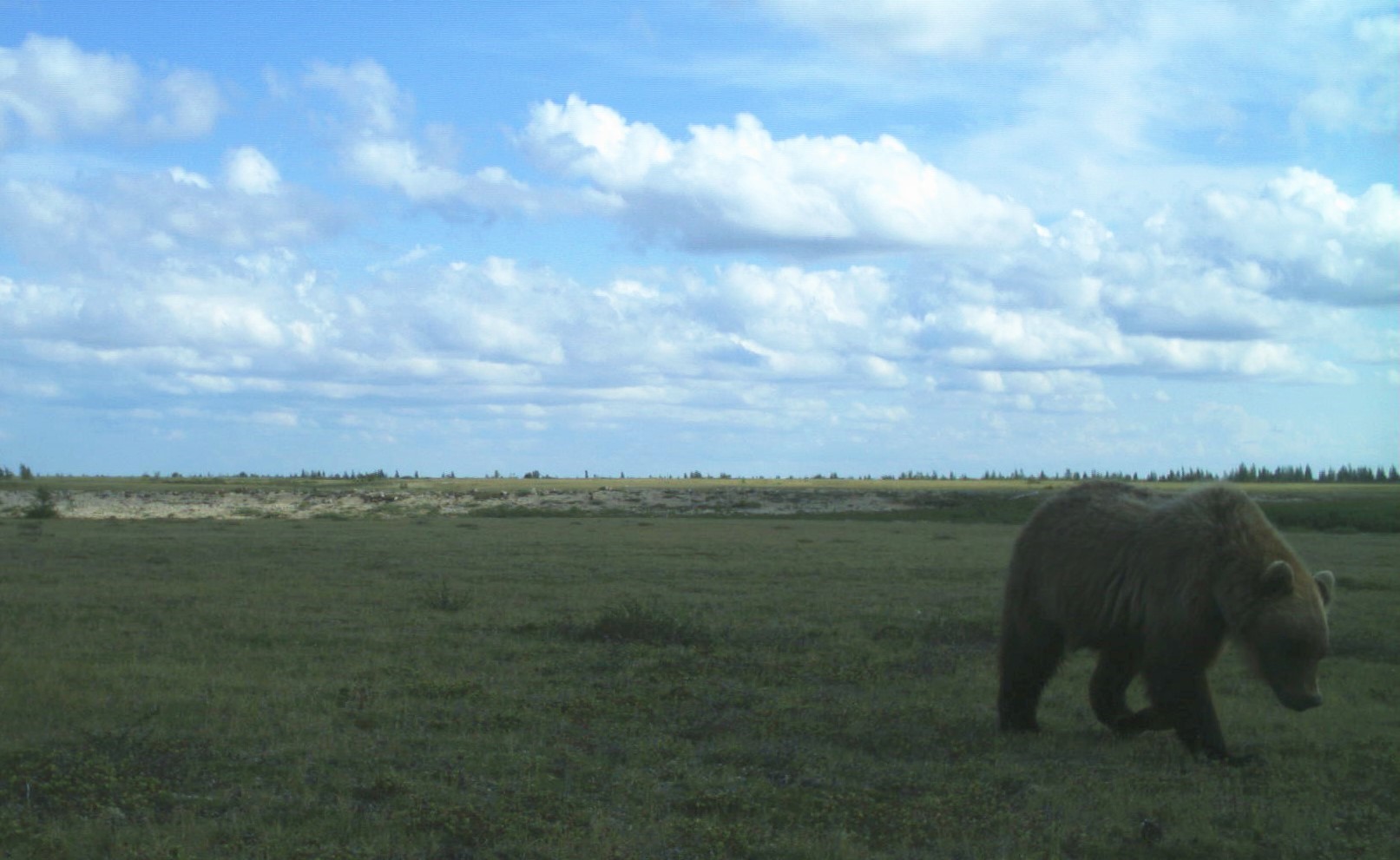
A study led by Clark, published in Arctic Science, is the result of a chance encounter in 2011, when he returned to Wapusk as a conservation scientist with the University of Saskatchewan. Rigging a set of Reconyx heat- and motion-activated camera traps to the outposts of his research camp, Clark aimed to gather data for his studies on human-polar bear interactions. However, one year in, while sifting through images triggered by park staff on snowmobiles, wandering birds and the occasional polar bear, he noticed an unexpected face wander across the frame: the first on-camera documentation of a grizzly in northern Manitoba.
Cameras corroborate species overlap
Shortly afterward, his team’s camera traps were picking up visits from black bears as well. Although neither species was entirely new to the area, these snapshots were the first tangible evidence that polar bears weren’t the only carnivores to roam these lands, or perhaps, to even call them home.

“It is and it isn’t surprising … Trappers have known about this for years,” Clark said. “But having these cameras out over time, we were able to show that it was more than one bear of all of the species and that it’s repeated. It’s not just one random bear wandering through.”
Set at 85 centimeters (2.8 feet) high, the cameras could not distinguish individual bears but used an infrared flash to count bear visits to a given camera by an individual or family of bears within a one-hour period. In six years of recording, the cameras have successfully captured 401 polar, grizzly and black bear visits at three camps within the park. More than 90 percent of these visits were by polar bears.
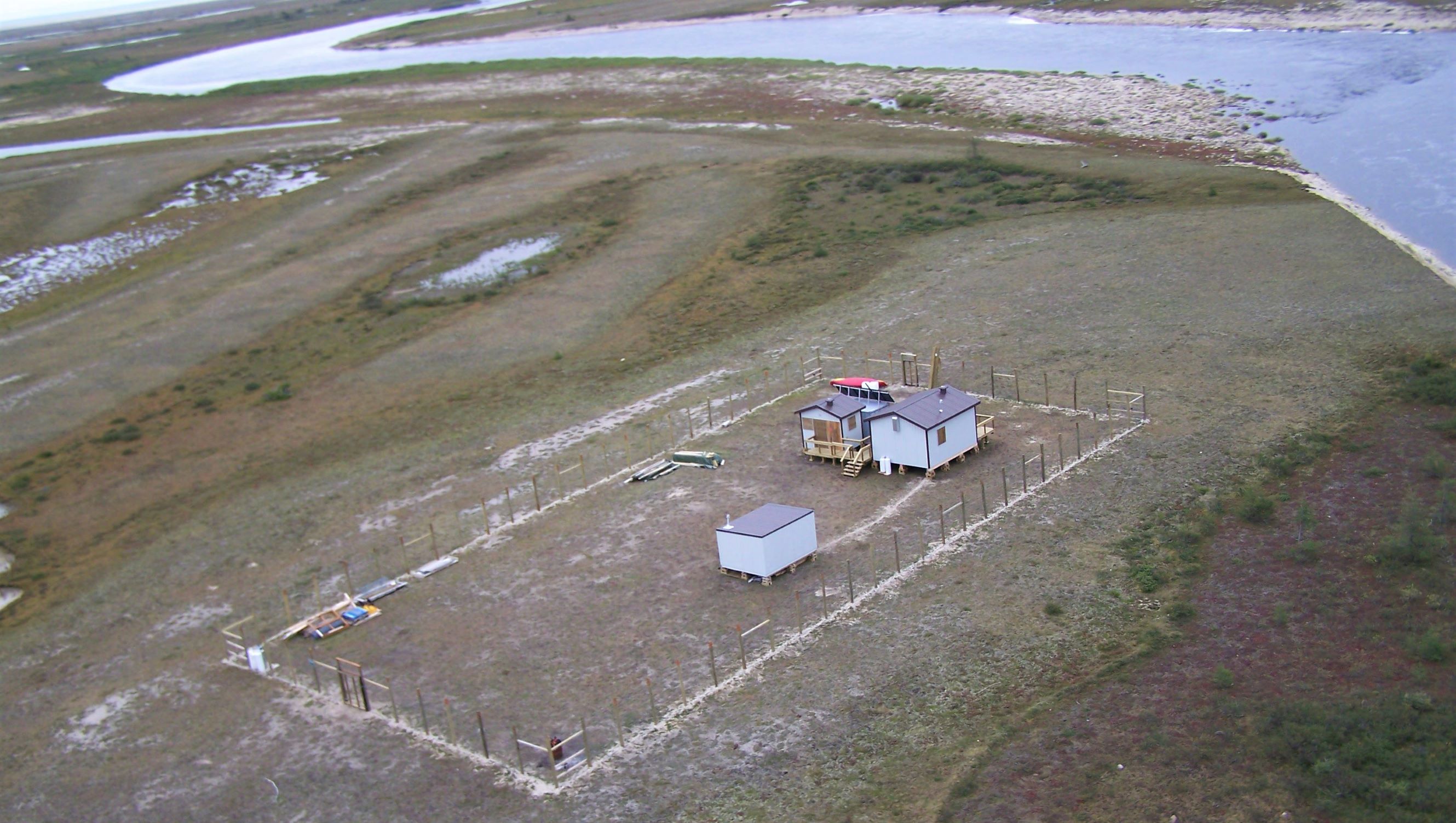
The trap setup consists of four cameras facing each of the cardinal directions around the perimeter of each camp, and one additional camera for redundancy. The team lucked into a trap arrangement — in terms of height, location and distance apart — that could adequately capture the trio of species, and so its positioning has remained essentially untouched to this day.
Although no interspecies interactions have emerged, one set of photos captured a polar bear and a black bear passing by the same camera some three hours apart from one another. It’s likely, Clark says, that this narrow time frame indicates these bears were aware of each other and could quite possibly be adapting to the other’s presence. Other footage has prompted the team to suspect that some grizzly bears are even denning in the area and not just passing through.

“Suddenly, this takes us into the terrain of values,” Clark said, “and it forces us to really take a hard look at bear and park conservation in an area where a bunch of ecosystems converge, and in a time where all of these ecosystems are changing very rapidly as a result of climate change.”
Combining cameras and culture
How best to approach this influx of non-native predators is a question that remains unanswered. The common approach to conservation, within national parks especially, is to preserve an environment in its known state. But as much of Canada’s subarctic regions rapidly thaw and evolve, this approach becomes less realistic and more difficult to achieve. To ensure a thoughtful approach, Clark says, undoubtedly involves the local people, who harbor a deep knowledge of the land and the ecological changes it’s undergone.
However, many residents of northern Manitoba are at odds with the initiatives of polar bear conservationists and researchers, as local perspectives have historically been cast aside or, in some cases, ignored entirely. For example, researchers have fitted bears with tracking tags to understand their movements, but many communities consider the tags an interference with local hunting traditions and insulting to the bears who, in some cultural views, are considered to be non-human persons.
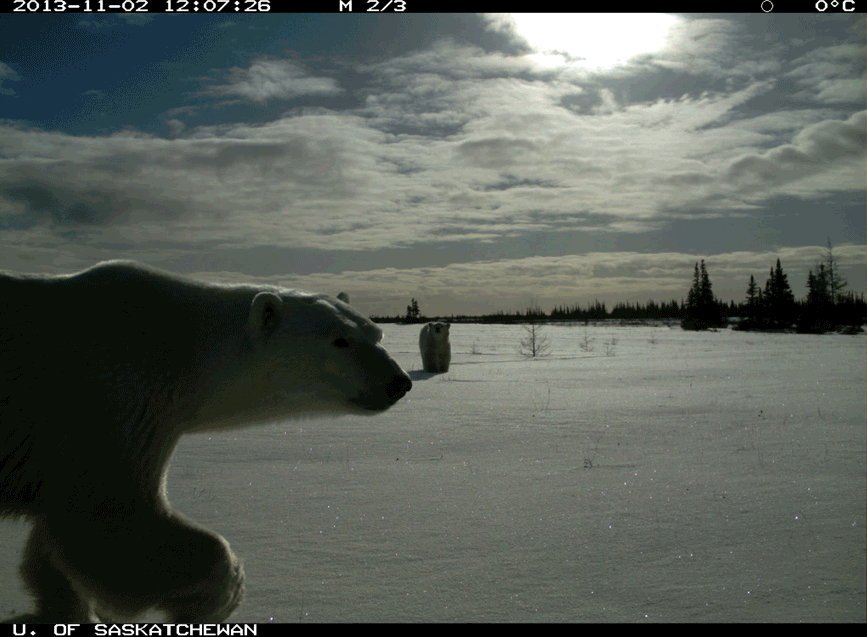
“The politics of polar bear conservation has been going bad for about 14 years. Conservation-wise, policy-wise, wildlife management-wise, it’s a train wreck,” Clark said. Northern Canada has been the epicenter of debates surrounding these matters, often between researchers and media, who put polar bears on an ecological pedestal, and Indigenous peoples for whom polar bears are a primary resource.
Chris Darimont is an interdisciplinary conservation scientist with the University of Victoria and the Raincoast Conservation Foundation who has conducted much of his research in partnership with Indigenous governments along Canada’s west coast. Darimont promotes the fusion of scientific methods with traditional wisdom and management strategies. “Management intervention that isn’t carefully considered has a track record of making things worse,” Darimont told Mongabay. Indigenous communities, he said, had managed natural resources for thousands of years in a way that was inherently sustainable and woven into their culture. Government agencies, lacking that kind of relationship and working with limited knowledge, are “more likely to commodify resources,” Darimont said.
Generally, in Darimont’s experience, Indigenous governments on the west coast have values that align with those of area conservationists. “We find that [Indigenous knowledge and science] are frequently complementary. They often tell the same story, perhaps in slightly different ways,” he said. “But Indigenous knowledge might, for example, provide things that science cannot, and vice versa.”

A study co-authored by Darimont and fellow researchers in 2014 successfully combined these two schools of knowledge. Noticing an increase in grizzly bear sightings throughout the archipelago off British Columbia, his team deployed camera traps and non-invasive hair-snagging sites to track bear movements and genetics.
“We combined our photographs and genetic detections with interview data from elderly knowledge holders in two [First Nations] communities on the coast,” Darimont said. “What that did is give us data that our Western science data could never do, and that is, go back in time. What we couldn’t do is put remote cameras on these islands 60 years ago, so each knowledge source provided something the other knowledge source couldn’t … it was a pretty powerful story.”

Clark, too, said he hoped to further marry camera trap data collection with the expertise of local people in northern communities. “You can combine the robustness of the cameras with the ingenuity and knowledge that the local people have about the land that they live on,” he said. “This also gives them a way to gain a voice and some real traction in these debates about bear conservation that really do affect them a great deal.”
In his next phase of bear conservation research, Clark plans to arm communities in northern Manitoba and Nunavut with camera traps of their own. His off-the-shelf Reconyx suite has provided a reliable view of the changing landscape. So far, however, he’s been able to capture only snapshots within the cameras’ 25-meter (82-foot) sensor range, and his curiosity of what lies beyond camp perimeters has prompted him to continue documenting the tale of the three bears in Wapusk National Park.

Clark said he thinks the information gained in Wapusk can help the conservation community around the world grapple with parallel situations. “Preserving a steady-state environment in the subarctic on the coast of Hudson Bay, or probably pretty much anywhere, is no longer an option,” he said.
“These doctrines and these assumptions in orthodox conservation thinking are really powerful, very deep-seated and hard to dislodge. Yet, the world is now forcing us dislodge them if we’re going to be able to do anything effective on the conservation front, now and in the future.”
Citation
Clark, D.A., Brook, R., Oliphant-Reskanski, C., Laforge, M.P., Olson, K., Rivet, D. (2018). Novel range overlap of three ursids in the Canadian subarctic. Arctic Science, doi: 10.1139/as-2018-0013.
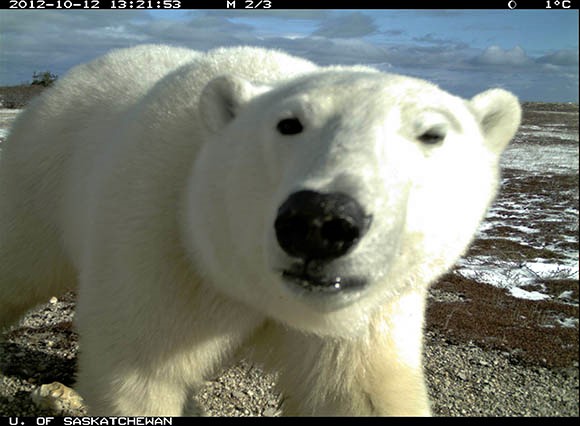
Banner image of a curious polar bear in Wapusk National Park in northern Canada courtesy of the University of Saskatchewan.
FEEDBACK: Use this form to send a message to the editor of this post. If you want to post a public comment, you can do that at the bottom of the page.












